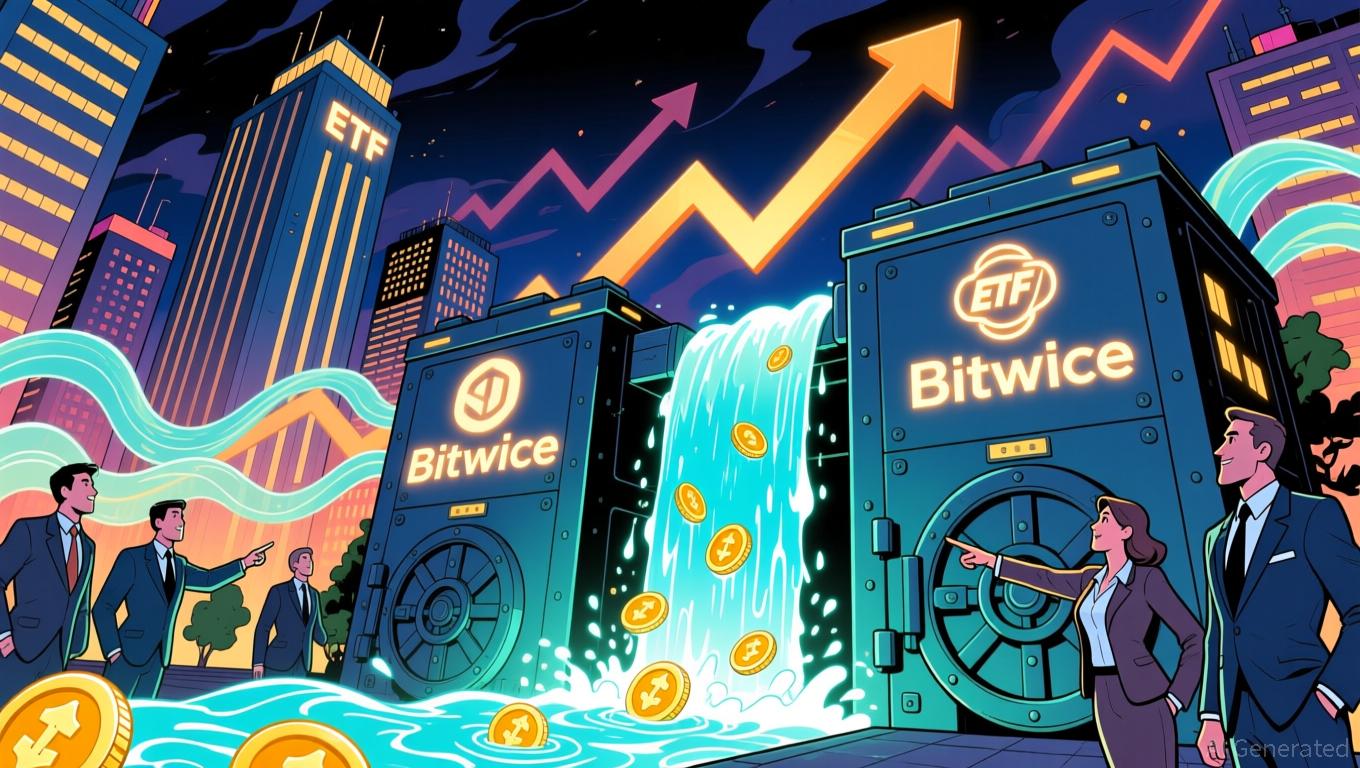Dovish Fed Chair: Blessing for Bitcoin or Threat to the Economy?
- The Fed's 25-basis-point rate cut sparks debate on Bitcoin's potential rally amid speculation about the next dovish chair. - Historical data shows Bitcoin typically benefits from sustained rate cuts, with 2020's emergency easing correlating to a $28,000 rebound. - Trump's shortlisted Fed candidates (Hassett, Waller, Warsh) all favor rate cuts, with Warsh's balance-sheet reduction plan seen as bullish for risk assets. - Market uncertainty persists as Fed's inflation forecasts and policy tone—rather than c
The recent 25-basis-point interest rate reduction by the U.S. Federal Reserve has sparked renewed debate about Bitcoin’s prospects for a strong upward move, especially as speculation grows regarding the policy direction of the next Fed chair. In the past,
The possibility of a more dovish Fed chair has become a major talking point. President Donald Trump is reportedly considering three main candidates—Kevin Hassett, Christopher Waller, and Kevin Warsh—all of whom have indicated support for rate cuts.
The Fed’s guidance on future policy and its inflation outlook will be crucial. In December 2024, a revised inflation forecast of 2.5% for 2025 and a reduction in expected rate cuts from three to two led to a 4.6% decline in Bitcoin after the announcement title5 [ 5 ]. This demonstrates how sensitive the crypto market is to macroeconomic developments. Although lower rates generally increase liquidity and weaken the dollar—conditions that tend to favor Bitcoin—efforts by policymakers to keep inflation in check could limit potential gains. The Fed’s current projections indicate two more rate cuts in 2025, but differing views among FOMC members highlight ongoing uncertainty title4 [ 4 ].
Both retail and institutional investors are taking a more cautious approach. Strategies such as diversification, lowering leverage, and using dollar-cost averaging are being recommended to manage volatility, especially around Fed announcements. Continued inflows into spot ETFs, reflecting steady institutional participation, could further fuel a Bitcoin rally if dovish policies are enacted title2 [ 2 ]. However, alternative cryptocurrencies remain highly volatile and may experience sharper corrections during periods of uncertainty title2 [ 2 ].
Regulatory and geopolitical developments add further complexity. A dovish Fed could weaken the dollar, potentially encouraging more global adoption of Bitcoin as a hedge. On the other hand, increased regulatory scrutiny—such as SEC decisions on crypto ETFs—could offset the positive effects of looser monetary policy title2 [ 2 ]. Under a Trump administration, the balance between pro-crypto initiatives (like holding Bitcoin reserves) and risks to monetary independence remains unpredictable title9 [ 9 ].
In conclusion, Bitcoin’s short-term outlook will be shaped by the Fed’s policy direction, the next chair’s approach, and wider macroeconomic trends. While a shift toward more accommodative policies could drive significant gains, investors should also consider risks such as stagflation, regulatory challenges, and market saturation. Careful attention to the Fed’s communications is advised, as the interplay of these factors will determine whether Bitcoin continues its rally or faces a correction.
Disclaimer: The content of this article solely reflects the author's opinion and does not represent the platform in any capacity. This article is not intended to serve as a reference for making investment decisions.
You may also like
The Transformation of Xerox Campus and Webster, NY’s Economic Revival: An Infrastructure-Led Model for Unlocking Value in Industrial Real Estate Markets
- New York's $9.8M FAST NY-funded upgrades transformed Webster's 300-acre Xerox brownfield into a 1M sq ft industrial hub by 2025. - Infrastructure improvements reduced industrial vacancy to 2%, attracting high-tech manufacturers and green energy firms. - The project boosted home prices by 10.1% annually and created 250 jobs via the $650M fairlife® dairy facility. - Public-private partnerships through BOA designation enabled risk-reduced development of contaminated sites. - Webster's model demonstrates inf

Ethereum News Update: ZKP’s Hardware-Centric Strategy Shakes Up Speculation-Fueled Crypto Presales
- ZKP launches with $17M pre-built Proof Pods, offering instant AI compute rewards via Wi-Fi-connected hardware. - Unlike speculative presales, ZKP's hardware-first model ensures operational readiness and decentralized network resilience. - Competitors like Blazpay and SpacePay focus on utility-driven crypto adoption, but ZKP's tiered, upgradable devices emphasize verifiable performance. - Ethereum's gas limit increase aligns with ZKP's distributed compute approach, addressing scalability challenges throug

Solana News Update: Investors Shift Toward XRP ETFs, Bringing Solana's 21-Day Inflow Streak to a Close
- Solana ETFs ended a 21-day inflow streak with a $8.1M net outflow on Nov 27, 2025, led by 21Shares TSOL's $34.37M redemptions. - This reversal contrasted with Bitcoin/Ethereum ETFs' $5.43B outflows and highlighted Solana's 7% staking yields and 70M daily transactions. - Analysts linked the shift to profit-taking, macroeconomic pressures, and investor rotation toward XRP ETFs with perfect inflow records. - Despite the outflow, Solana ETFs still hold $964M in assets, but face challenges as TVL dropped 32%

XRP News Today: Institutional ETFs Drive XRP to Compete with Bitcoin's Market Leadership
- XRP ETFs see $160M+ inflows as institutional demand surges, with Bitwise and Franklin Templeton leading the charge. - NYSE approves Grayscale and Franklin XRP/Dogecoin ETFs amid SEC easing altcoin fund approvals, signaling crypto normalization. - Altcoin Season Index at 25/100 shows Bitcoin dominance, but projects like Aster and Zcash outperform BTC by 1,000%+. - XRP rebounds to $2.06 with 48% volume spike, but 79M tokens absorbed by ETFs raise supply concerns. - Institutional-grade custody solutions fro
